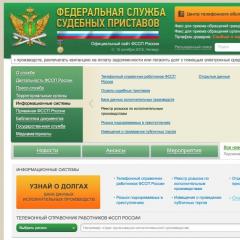How to Select Documents: Step-by-step instructions
Despite the ease of action, the firmware of documents is an important organizational moment in which mistakes are unacceptable. That is why in each organization there must be employees who know how to perform this process. Incorrectly stitched documents may entail serious problems.
If the documents are sewn incorrectly
- Incorrect document firmware may cause to refuse them. And this is lost time, effort and money for the wind.
- Invalid or poor-quality firmware of documents of your organization can serve as a reason for refusing stakeholders from cooperation.
- If the documents are stitched inactively, then the likelihood of their disbandment is large or altogether, that later, when checking it will be very difficult to prove.
What documents need to be sewed and why?
Documents are sewn so that they are not lost and have not replaced. Also, the documents are firmware due to a large flow of documentation, in order not to get confused in business papers.Usually, those documents that are surreated in the archives are subject to stitching, are sent to checks or have some kind of value for their owner.
Documents that need to be sewed:
- archival;
- accounting;
- personnel;
- for checking.
Important! The recorder must remember the accuracy and quality of stitching. Otherwise, when disbanding documents or with their disappearance, all responsibility will fall on his shoulders.
Main regulations
As such regulations on stitching documents do not exist. There are only recommendations that approved Rosarhiv by order of 23.12.2009 No. 76 and from GOST R 51141-98 "Customs Production and Archival Case". And instructions for the documentation that the Central Bank of Russia released.Due to the lack of strict standards for stitching documents, the entrepreneur is difficult to understand the process itself, because each individual body requires compliance with its rules.
Preparation of documents for stitching
Before proceeding with the main work, the documents must be prepared. The preparation process takes place in several stages:1. Clamping.
Covers for documentation are three species:
- Standard - the usual cover, which is most often found. Cover size 229x324 mm, contains standard sheets (mainly A4).
- Non-standard - applies if the document format has an unusual size.
- For long storage - such covers make from durable cardboard for longer storage. They must be dense and wear-resistant.
Prepare a set of documents. The pack must be no more than 250 sheets. Its thickness should be not more than 4 cm. To the block it is necessary to add an empty sheet. All paper clips must be removed.
3. Numbering.
Page numbering is made only by a simple pencil. The room is placed in the upper right corner. No Roman designations. Inventory in numbering does not turn on. Page numbers should not touch the text of the document.
Important! In the process of numbering with a title list, the number "1" is not put, number only from the second sheet with the numbers 2.
Basic instructions:
- If a large format sheet appears in the documentation, it must be deployed and numbered in the upper right corner, then minimize it. He is neat carefully, for one edge, whatever it could be repeatedly deployed.
- In the documents, the letters are stored in envelopes. First, the envelope number, then all the letters invested in it.
- If the documentation size is too large (more than 250 sheets), then it is divided on the volumes that have their own separate numbering.
- Sometimes separately numbered publications come across separately. They are also numbered, despite the existing numbering.
- If the documentation contains glued sheets, then this document must be numbered as one. This includes an inventory of attached additions on the offline of this sheet.
- When the sheet is fully occupied, there is no place for the numbering, then numbered on the back of the document.
- If the number is incorrect numbering, the number is crossed and put the correct one, while in the corrected area necessarily make a witness inscription.
Each stitched document is obliged to have its own inventory in which you want to specify:
- organization and name of the document;
- the dates of the binder and the shelf life;
- detailed annotation (the purpose of storage, content, number of pages and other important notes);
- the number of documents and the signature indicating the name.
Note! Documents intended for internal use are stitched by the rules set by your organization.
Possible sewing options
You can sew the documentation in many ways. It all depends on the existing devices and the requirements of the manual. Here are some options:- Classic method - with needle and thread. Usually a small amount of documents in two, three or five punctures are sewn. Threads are fastened, and the witness inscription is glued.
- With the help of a screwdriver and a tight rope. Suitable for bulk materials.
- Using a hole panel. Looks like a classic way, only instead of a needle - hole punch.
- With the help of a binding machine. Use this type of stitching only in the printing house.
Necessary materials for stitching documents threads
For document firmware with a classic way, the recorder must have:- needles (different sizes), sewn, thread, rope or twine;
- cover;
- assistant sheet;
- scissors and glue;
- hole punch (if necessary).
The process of stitching documents
We remove all brackets, clips, numerous, fold into a flat heel and start sewing:1. We do in documents 3 holes (puncture) with a needle (if necessary, seer). The distance between the holes is about 3 cm. 80 cm long thread.
Note! Ordinary threads are fragile, it is better to use thicker and strong. In the extreme case, add a thread in two or three times.
2. Inwing a needle from the wrong side to the average hole.

3. Then immediately stick the needle to the upper hole.

4. After the upper puncture, through the offline sticking into the lower hole.

5. Next, coming out of the lower opening, we pass in the average. If you need to sew a large number of cases, then the stitching process is repeated several times to strengthen the folder.

6. Tie a simple knot on the wrong side. There should be a thread tail of about eight centimeters.
7. On the nodule glue the assistant list on which we make the necessary record. The sticker with the witness inscription usually has dimensions of 4x6 cm. The sheet passes on the node and part of the thread.
Note! Considering the documents should the head of the organization or his authorized person.
8. We put the seal and signature.
Important! Having assured the stitched documents of the signature and seal, put them so that the part is both on the sticker and in the certificate. This will give a guarantee of the preservation and inviolability of documents.
How to sew documents correctly (video)
For a more detailed study of the stages of the firmware, it is recommended to watch the video where the process of stitching documents is clearly shown:Large document firmware
If the clerk is faced with a problem of a large number of documents stipped, special equipment for archival binding and broching can help him. If there is no such available, you can use payable for automatic crosslinking. But it is worth remembering that in this case, important information may be lost.Firmware of documentation with the machine (video)
Video instructions for using the machine for firmware of documents with which you can perform work within a few minutes:In terms of paperwork, office work is a rather complicated process. To this day, many disputes are being conducted on how to sew them correctly, but there is no single rule. If you flash documents just for storage, it will not require special efforts. But if it comes to important securities, then it is worth considering the work.


